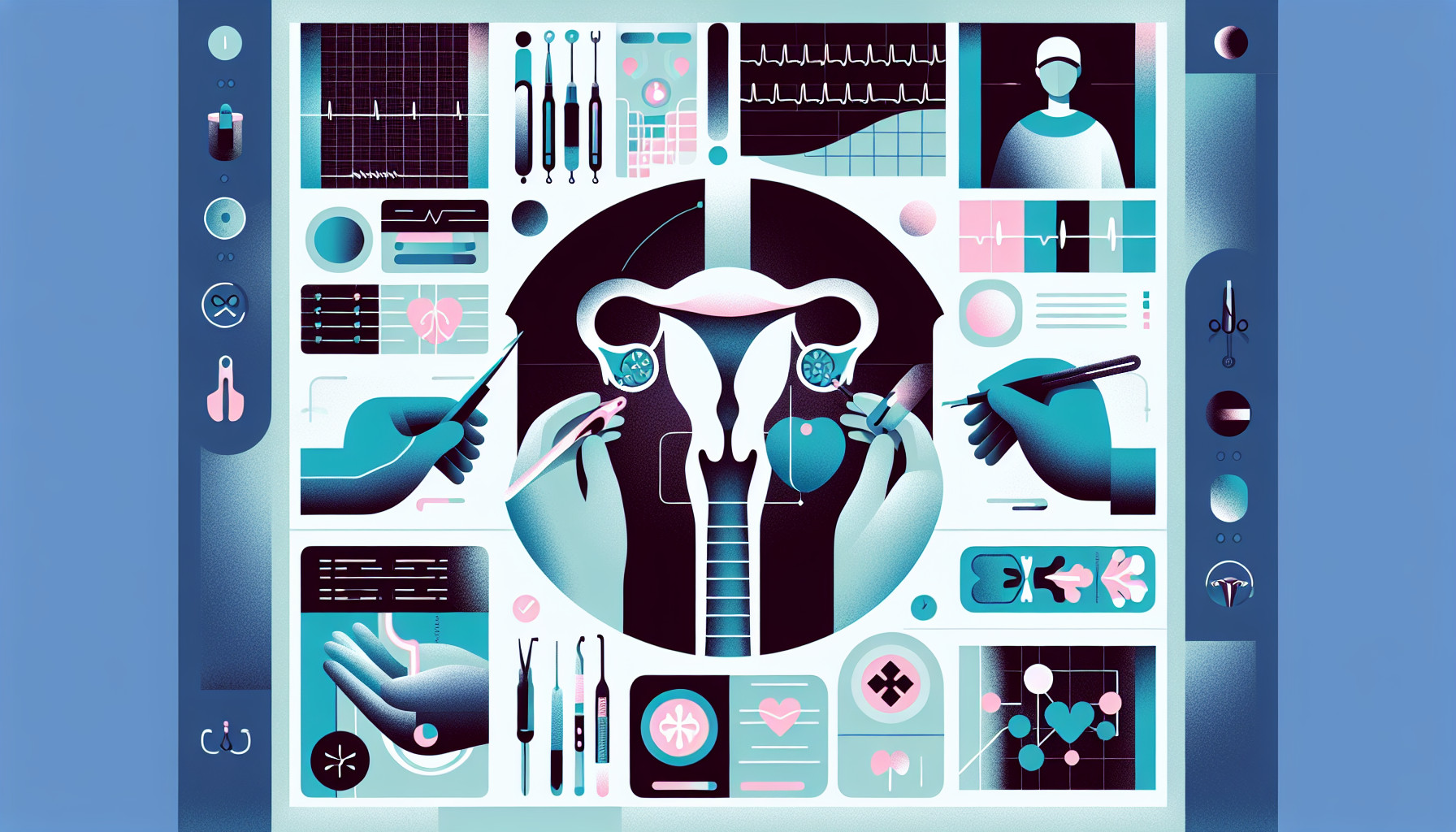Our Summary
This research paper is about a study examining how the presence of uterine fibroids, which are non-cancerous tumors in the uterus, might affect a minimally invasive procedure used to treat heavy menstrual bleeding. This procedure, called thermal ablation, uses a special antenna to deliver microwaves that heat and destroy the lining of the uterus.
The researchers were particularly interested in how fibroids, which can alter the shape of the uterus and have a different water content than normal uterine tissue, might change the pattern of the microwave heat treatment. They conducted experiments using a computer model and real tissue samples to study the effect of fibroids of various sizes and locations on the treatment.
Their findings suggest that fibroids between 1 and 3 cm in diameter have minimal impact on the extent of the microwave heat treatment. The largest change they observed in the depth of the treatment due to the presence of fibroids was just over 1 millimeter. This suggests that the presence of small to medium-sized fibroids should not significantly affect the outcomes of this treatment for heavy menstrual bleeding.
FAQs
- What is thermal ablation of the endometrial lining of the uterus used for?
- How do uterine fibroids affect microwave endometrial ablation patterns?
- How accurate is the computational model in predicting ablation zone extents in the presence of uterine fibroids?
Doctor’s Tip
A helpful tip a doctor might tell a patient about endometrial ablation is to discuss any uterine fibroids they may have with their healthcare provider before the procedure. While small uterine fibroids are unlikely to significantly impact the effectiveness of the ablation, it is important for the doctor to be aware of their presence in order to ensure the best possible outcome. It is also important for the patient to follow post-procedure care instructions provided by their doctor to promote healing and reduce the risk of complications.
Suitable For
Patients who are typically recommended for endometrial ablation include those who suffer from heavy menstrual bleeding (menorrhagia) that has not responded to other treatments such as medication or hormonal therapy. Endometrial ablation may also be recommended for patients who have benign uterine conditions such as uterine fibroids, polyps, or adenomyosis. It is important for patients to have completed their childbearing before undergoing endometrial ablation, as it can affect fertility. Additionally, patients with certain medical conditions such as uterine or cervical cancer, pelvic inflammatory disease, or current or recent pelvic infection are not suitable candidates for endometrial ablation. It is important for patients to discuss their individual medical history and options with their healthcare provider to determine if endometrial ablation is the right treatment for them.
Timeline
Before endometrial ablation:
- Patient experiences heavy menstrual bleeding (menorrhagia) and other symptoms such as cramping and fatigue.
- Patient may undergo various diagnostic tests such as ultrasound, hysteroscopy, or biopsy to determine the cause of the abnormal bleeding.
- After a diagnosis of abnormal endometrial lining, the patient may be recommended for endometrial ablation as a treatment option.
After endometrial ablation:
- Following the procedure, the patient may experience some cramping and discomfort for a few days.
- Menstrual bleeding typically decreases significantly or stops altogether after the procedure.
- Patient may be advised to avoid strenuous activities and sexual intercourse for a certain period of time to allow for proper healing.
- Follow-up appointments with the healthcare provider may be scheduled to monitor the effectiveness of the procedure and address any concerns or complications.
- Long-term outcomes may include reduced menstrual bleeding and improved quality of life for the patient.
What to Ask Your Doctor
- How will the presence of uterine fibroids impact the effectiveness of the endometrial ablation procedure?
- Are there any specific precautions or considerations I should be aware of before undergoing endometrial ablation with uterine fibroids present?
- What is the expected recovery time and potential side effects of endometrial ablation in the presence of uterine fibroids?
- Are there any alternative treatment options I should consider, given the presence of uterine fibroids?
- How often will I need follow-up appointments or monitoring after the procedure, especially with the presence of uterine fibroids?
Reference
Authors: Faridi P, Fallahi H, Prakash P. Journal: Annu Int Conf IEEE Eng Med Biol Soc. 2018 Jul;2018:3236-3239. doi: 10.1109/EMBC.2018.8513051. PMID: 30441081
